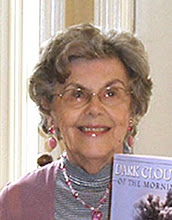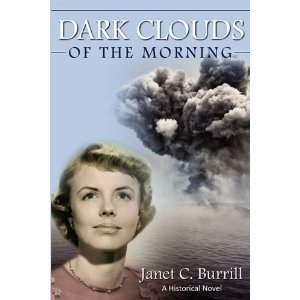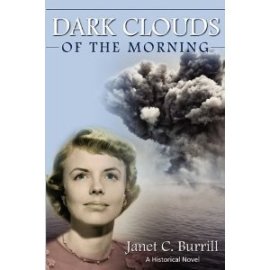 Janice L. Dick writes richly evocative historical novels about the Mennonite people in Russia during the first part of the 20th century – around the time of the revolution and Stalin’s regime. I loved her Storm Series, set in southern Russia in 1914. Janice agreed to chat with us today about her new novel, Other Side of the River.
Janice L. Dick writes richly evocative historical novels about the Mennonite people in Russia during the first part of the 20th century – around the time of the revolution and Stalin’s regime. I loved her Storm Series, set in southern Russia in 1914. Janice agreed to chat with us today about her new novel, Other Side of the River.
Janet: Welcome, Janice, and thanks for taking time to join us. Congratulations on the publication of Other Side of the River! This novel is releasing differently from your previous series – in a series of bite-sized novellas. Will you tell us a little about that?
Janice: This was new to me as well. The idea is to divide a longer novel into installments that release every two or three weeks until all the parts are out, then release it as a complete book. So it’s not a serial but consecutive parts of the whole.
Janet: With the publishing world shifting as it is, this is the time for new approaches. Who knows where the innovators will take us? Readers like me have been waiting a long time since your Storm Series. As a writer, I know that your waiting was harder than ours. What helped you to persevere?
Janice: I couldn’t think of anything I’d rather do than write. The stories were there, waiting to be written, to be read. As a Christian writer, I also felt a certain call on my life to write for the encouragement of others.
Janet: Tell us about Other Side of the River.
Janice: This book is based on a true story I read as I researched my other novels: how a group of Mennonites escaped Stalin’s ever-tightening regime into China in 1930. I built the story around that.
Janet: Do you start with characters or plot? What sparked this story?
Janice: In this case I began with the plot, then created characters to live it. As I said in the previous answer, I read about this event and it created such a sense of amazement at the perseverance and faith of these people under enormous pressure. The actual story is incredible and fairly well documented.
Janet: Do you have a favourite character in Other Side of the River?
Janice: Well, I like the two main characters, Luise and Daniel, but the Russian horse trader, Josiah Markowiscz (pronounced Markowits) is also a favourite. I admire his conscience, courage and loyalty.
Janet: What was the best part of the story to write?
Janice: In this story, the ending was the most exciting part for me to write. I wanted to stay true to the extraordinary facts and also weave in the lives of the characters in a way that would impact the entire story.
Janet: It sounds like the characters have quite the journey to reach the end. What’s the novel’s theme? Or what do you want readers to take away when they’re done?
Janice: As in my Storm Series, one of the main themes is the faithfulness of God in times of great trial. In River another take away is that life is not fair; it does not always turn out as we hope it will. We take what we get and, with God’s help, make the best of it. This life is a testing ground for the real life to come, which gives us hope and strength to carry on.
Janet: From reading Volume 1 of this story, I know that Luise embodies the attitude of making the best of things and looking on the bright side. She still struggles with the darkness affecting her loved ones, and her choices to stay positive encourage me to be careful with my own attitude. I’m glad to see you’re working on a sequel. Can you tell us anything about Far Side of the Sea without giving spoilers for Other Side of the River?
Janice: Sea begins fifteen years after the end of River, and it follows the life of a young man caught in the chaotic aftermath of World War II in northern China (Manchuria). A few years ago I met an elderly man who told me his story, and although I’ve used literary license quite freely, so much of the story colour comes from his fascinating memories. It’s extremely difficult to find accurate facts—or any facts—on China between the 1930s and the 1950s, so people are my most trusted resource.
Janet: And people’s conversation can bring up such interesting tidbits that you’d never find in a written history. Those are the little things that make the setting feel real. Can you think of any particular snippets of information you’ve gleaned this way?
Janice: My source gave me visual comparisons between places I have been and my historical setting. He told me about cultural aspects of that time and place that I couldn’t have found out otherwise because his was one of the few Mennonite families that stayed in China more than a couple of years. For example, I asked if their family ate Mennonite food or Chinese? He said mostly Mennonite, but there was always a bottle of soy sauce on the table as well.
Some of the questions he answered for me were: what did you wear, where did you get your clothes, what did you eat, what kind of transportation was used, how long did it take to ride from point A to point B, and the list goes on. I tried to create a believable story world from the answers he provided for me.
Janet: So many readers love Amish fiction, I think in part because of the peaceful, simpler approach to even the hard parts of life. What do you say about Mennonite fiction? Is there an overlap or are these two entirely different subgenres of Christian novels?
Janice: I don’t see a lot of comparison between the two subgenres. Most of the Amish fiction I’ve noticed has been primarily romance fiction with a buggy and bonnet. The Mennonite story is one of almost constant persecution and flight from those wishing to annihilate them. Because I am a romantic at heart, I can’t help but include that aspect of the lives of my characters, but my stories are much deeper than that. They involve severe testing of faith, adaptation to difficult situations, and the discovery of joy in the most unlikely places. We are a people who have moved often from place to place for survival, both physical and spiritual. One of the main reasons I started to write Mennonite fiction was to preserve the faith stories of my forefathers, because I believe they are worth passing on to my children and grandchildren. It’s part of who they are. And some people just need story to bring the point across!
Janet: Well said! Time to get to know you a little better. What’s something you love about where you live?
Janice: We have a lovely house on the farm with a large yard (translation: lots of work in summer, but I love the space and privacy). We’re also blessed with a wonderful family, a great circle of friends and a church family that gives us a sense of community.
Janet: What do you like to do to recharge?
Janice: I love reading most of all, but I also like to watch mysteries on TV—nothing too violent though. My husband and I sing in a community choir, so that involves weekly practices and four concerts a year. And we have been blessed with ten amazing grandchildren who recharge my heart while physically exhausting me (grandparents will understand this comment).
Janet: I understand it even without grandchildren! Again, congratulations on the new novel, Janice. May it bless many. And thank you for stopping by.
Janice: Thanks for this opportunity to talk about books and writing, Janet. God bless!
===
Janice L. Dick began writing intentionally in 1989, then continued to learn through courses and conferences. In 2001 she began her first novel, followed by two sequels. These historical novels were released in 2002, 2003, and 2004, the first two winning first place in The Word Guild’s Canadian Christian Writing Awards. The third was shortlisted for the same award.
Besides one more completed historical novel and a sequel as yet unfinished, Janice has also written a contemporary cozy, book reviews, guest blogs, articles, short stories, devotionals, stories for children, and a bit of poetry.
You can find Janice at these places online (and please scroll down to read more about Other Side of the River):

The year is 1926, the Russian Revolution is past, and the grip of communism tightens around the Mennonite people in Western Siberia. Luise Letkemann wants nothing but freedom, security, and to be married to Daniel Martens, but escalating oppression from Stalin’s regime threatens to destroy everything she lives for and believes in.
Daniel would be content with Luise and a degree of compromise with the system, but as he faces life-and-death situations at every turn, he realizes there is no middle ground. When he confronts a Soviet official in defense of the truth, he is separated from Luise and she must choose her path and trust that God will bring them back together.
Over time and vast distances, Luise and Daniel struggle to survive and to make sense of their interrupted dreams and plans, not even knowing if the other is alive. Meanwhile, Soviet secret service official, Leonid Dubrowsky, launches a personal vendetta against both of them. Will Luise and Daniel be reunited, or will all they long for be lost forever? What will be the cost of freedom calling them from the other side of the Amur River, and will the sacrifice be worth the reward?
Like this:
Like Loading...
 Butterfly Palace, by Colleen Coble (Thomas Nelson, 2014)
Butterfly Palace, by Colleen Coble (Thomas Nelson, 2014)










